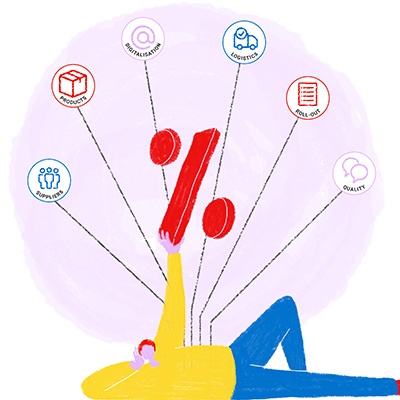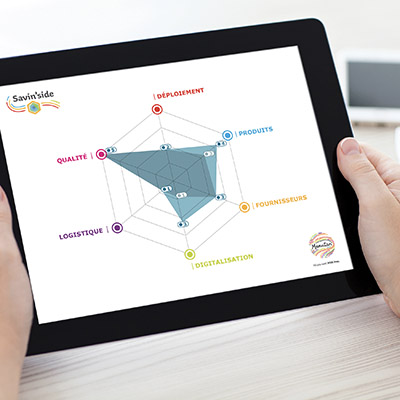Getting business operations fully or partially back up and running is a real challenge for procurement departments. Companies will need operations to run at full capacity to make up for lost time, meaning that each element of the supply chain has the potential to become a bottleneck. This is why procurement departments must be particularly active in adjusting the capacity of the supply chain.
Adjusting capacity requires strong and precise coordination with many different stakeholders, in a context where workload schedules are not necessarily linked. From a procurement perspective, the fluidity of the supply chain relies on:
- Integrating internal customer priorities
- Having an overview of supplier capacity
- Making supply channels accessible
Procurement departments must strengthen their relationships with internal customers to prioritise flows
A recent article highlighted how procurement departments should use obstacles to improve and, above all, increase their performance. The Deloitte study emphasises one skill in particular: the ability to strategically align with other company departments.
This skill is even more crucial when getting business operations back up and running. To successfully support the company in getting back up to speed, the procurement department must align itself with current needs and priorities:
- In terms of components
- In terms of equipment
Better still, the ability of procurement departments to anticipate requests and bring innovation to their internal partners would be particularly welcome during the recovery phase, where companies need to gain ground and meet new needs.
Procurement departments must build on their supplier relationships to anticipate capacity
Procurement departments know where innovation can be found within its inner circle of suppliers. This is why the quality of their relationships with their main partners is strategic.
However, before any innovative solutions are even implemented, the major challenge affecting supplier relationships while exiting lockdown and restarting large-scale operations is priority access to resources. After two months of general stagnation in many channels, the return to business will be widespread and demand will soar sharply.
Procurement department employees will be crucial for securing the organisation's supply:
- Ensuring quality and keeping to timeframes
- Ensuring that the supply chain is provided with the expected quantities
- Staying flexible and alert to take advantage of market opportunities
Procurement departments must take a more creative approach to the supply chain in order to secure supplies
Anticipating supplies from first-class suppliers only makes sense if access to the supply channels is open. The third bottleneck that procurement departments should look out for is the fluidity of transport.
It is likely that the supply chain will see a combination of the following three issues as lockdown measures are gradually eased and business operations resume:
- Dealing with constraints from preventative procedures, which slow down operations.
- Getting service operations back online, after weeks of working remotely.
- Having difficulty with forecasting and seeing an increase in instances of the bullwhip effect [1]
Rigorous planning and careful monitoring of flows are essential for providing the supply chain with the necessary flexibility. Procurement departments that have chosen to use a cloud-based e-procurement solution will find that it certainly offers a significant advantage in terms of agility.
In conclusion, getting operations back up and running post-COVID-19 requires procurement departments to redouble their efforts to keep business operations running. A strong company response, coupled with the scarcity of certain resources and congestion in suddenly over-used logistic circuits relies on the supply chain being as flexible as possible.
Now more than ever, engaging with digitalisation is clearly a priority to make procurement processes even more agile, with an increased capacity for anticipation. For this reason, we recommend taking a look at the latest article by Pierre-Olivier Brial, Managing Director of the Manutan Group. Read What is digital continuous improvement for procurement? and discover a new side to the potential of value creation in procurement.
[1] The bullwhip effect is a systemic supply chain disruption caused by uncertainties in restarting production, sales reports and pressure on supplies. Surplus stock suddenly appears in some areas. Shortages of common products appear elsewhere.








